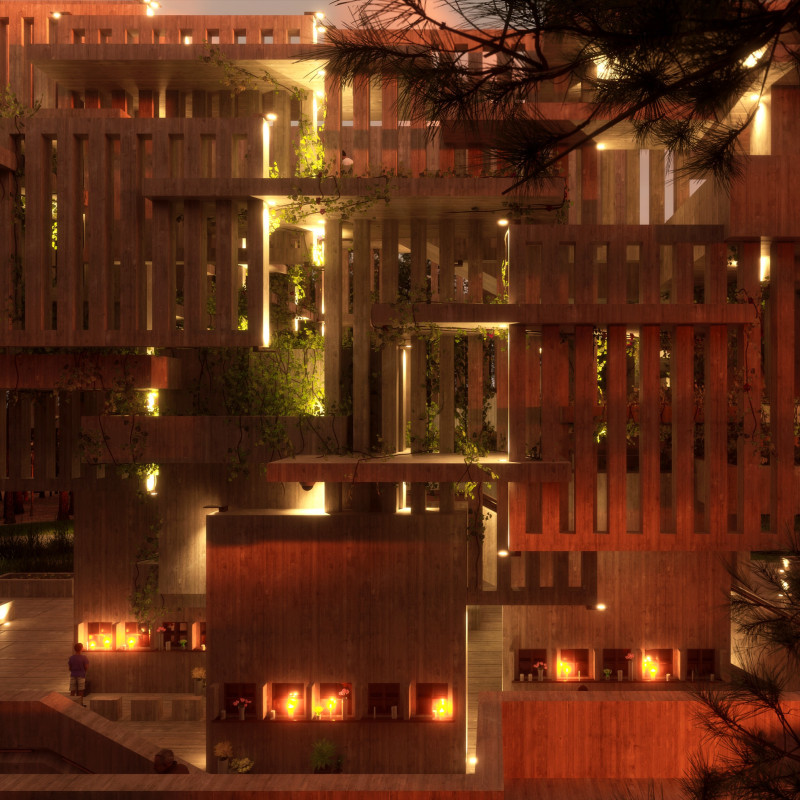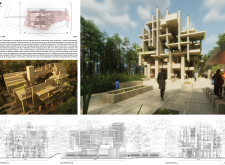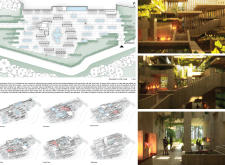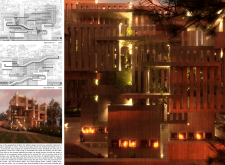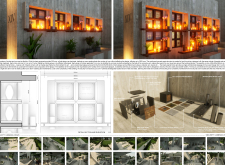5 key facts about this project
Throughout the design, various distinct elements work together to create a harmonious atmosphere. The overall form of the structure showcases a clean, modern aesthetic, with an emphasis on geometric shapes that provide both visual interest and functional benefits. The use of natural materials such as wood, glass, and stone not only speaks to the project's commitment to sustainability but also enhances its connection to the surrounding landscape. These materials are thoughtfully selected for their durability and aesthetic appeal, contributing to both the longevity of the project and the comfort of its users.
One of the essential aspects of this architectural project is its attention to light and space. Large windows and open, airy rooms allow natural daylight to penetrate deep into the interior, creating a welcoming environment that encourages social interaction. The careful consideration of sightlines and spatial organization enhances the overall user experience, encouraging a sense of community while maintaining areas for quiet reflection. The flow of the layout is intuitive, guiding inhabitants through various communal spaces that are designed to facilitate diverse activities, from formal gatherings to informal meetings.
Unique design approaches are evident throughout the project. The integration of green roofs and living walls not only improves the building's energy efficiency but also provides an added layer of aesthetics, contributing to the ecological balance of the urban environment. This approach not only symbolizes a commitment to sustainable architecture but also invites biodiversity into the built environment, serving as a habitat for local flora and fauna. Additionally, the project incorporates renewable energy sources, such as solar panels, which further support its environmental goals while maintaining functionality.
The project's outdoor spaces are equally well considered. Balconies and terraces extend the interior experience into the exterior realm, providing users with ample opportunities to engage with nature. These areas are designed to promote relaxation and socialization, acting as extensions of the indoor spaces and enhancing the overall versatility of the building. Landscaping elements are strategically placed to foster a connection between the architecture and the natural surroundings, reinforcing the project's overall vision of harmony and balance.
In essence, this architectural project exemplifies a meticulous approach to design that prioritizes functionality while remaining sensitive to its environmental context. The careful selection of materials, the emphasis on light and space, and the innovative integration of sustainable practices are all indicative of a deep commitment to both user experience and ecological responsibility. For those interested in a more profound understanding of the architectural ideas behind this project, it is worthwhile to explore the architectural plans, sections, and designs that provide further insights into the thought processes driving this endeavor. Engaging with these elements will enrich your appreciation of the project's complexity and the architects' careful attention to detail.


